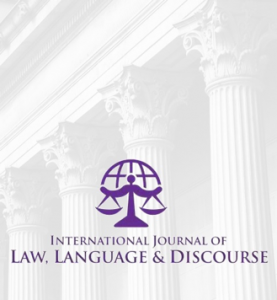Members of the American Translators Association work across a variety of fields; the same is true for those in the Law Division. Diversity is good! And while there are rather precise definitions for translation and interpretation within the field of law, and members may more closely align themselves with one or another of these, there is no doubt that there can be considerable activity across the labels. Which can raise some theoretical and practical concerns.
Rather than wrestling with long-contested terminology and well-worn arguments, let’s examine the question from a different perspective. I’ll suggest the terms “science,” “art,” and “craft.” There are plenty of other metaphors to consider, but let’s try these today.
Loosely defined,
- Science is a system of rules, of procedures. The scientist is expected to remain true to those rules, or to specify precisely when and where the rules are being violated. Rather like machine translation, isn’t it? The process is rather fixed – and in the legal field, vocabulary, grammar, and known references would prevail under a “scientific” model. There are also “schools of thought” within the fields of science.
- Art has an orientation to final product rather than the process. Considerable freedom is allowed in the reach for ultimate beauty. There are some principles and skills which are the basis for creation of beauty, but creative substitution is allowed. Here we may be emphasizing “the meaning behind the message” rather than the content alone.
- Craft is a sort of middle ground. A wise friend once suggested that craftwork requires great respect for the materials and environment you are working from, such as carving for inclusion of the grain and knots of the wood – you can’t just treat every piece of wood the same. Craftworkers are not slaves to the business, not industrial workers, but instead produce the right product for the specific need, based on the available resources. Craftworkers may aspire, as Wolff (2011) suggests, “to provide literate rather than literal translations.”
Clearly these are extreme, almost theoretical, positions.
But where can we discuss these perspectives, as they apply to translation and interpretation in law, most effectively?
Or where might other models or frameworks for analysis be presented? Where may translators and interpreters share their successes, and analyze the issues of their fields?
As a professional community of practice, it is critical that legal translators and interpreters both stay current within the field, and further develop its theoretical underpinnings. After all, professions are typically defined as having a specific academic discipline, or a requirement for licensure, but as Paula Arturo has noted, in many jurisdictions there are no certifications required to enter this field.
Similarly, we can construe the topic of “law” more broadly – we may include areas such as consumer product safety warnings, legislative discussions and interest groups statements concerning prospective statutes, political campaign speeches, and more. All these are reported in foreign language media or within product packaging. Such translations require theoretical stances concerning the merits of this or that approach to linguistic challenges.
The International Journal of Law, Language & Discourse is interested in all these perspectives. As a journal that values the thoughts and experiences of practitioners alongside those of scholars, we hope for articles of varying lengths and forms that bring “the real world” to scholars. Alongside these are scholarly studies and theories that would benefit by reactions from the field.
The journal is “platinum-standard” open-access:
- Free to read; and
- Free to publish in – no fees for submission, review, or publication.
Not enough has been reported on the challenges of legal translation and interpreting. A few articles may help point the way for more:
- Informal Instant Translation in the Tanzanian Courts
- Communications of autonomy and vulnerability in criminal proceedings
- Othering the “other” in court: Threats to self-presentation during interpreter assisted hearings
- A Discourse Analysis Approach to Legal Translator Training: More than words
Yes, there are important scholarly journals out there dedicated to translation and interpretation, such as Translation Review. And classic books, such as Biguenet & Schulte (1989). More specifically, solid books and articles that discuss the issues of the legal field, including Olsen, Lorz & Stein (2009), and Crooker (1996, if you can find it!), Šarčević (1997), and many others. For the most part, these are not easily (or inexpensively) accessed by most practitioners. See Vernigorov (2010) for a nice summary of some issues (a free article out of Russia). Most of the newer work comes from Europe or China – hardly matching the situation in North America.
The blogs and discussion space of ATA are important areas for “conversations about” issues. A journal such as International Journal of Law, Language & Discourse is a place to report more firm conclusions. And to read those. And to consider the road ahead.
For after all, 70 years ago Richard Winston wrote
“At the end of the road lies the unattainable, the perfect translation.”
(And Heike Holthaus aspires to the same in her Law Division blog post.)
We hope you’ll join us as a reader, and as a contributor.
https://ijlld.com

References
- Biguenet, J., & Schulte, R., Eds. (1989). The craft of translation, University of Chicago Press.
- Crooker, E.E. (1996). The art of Legal interpretation: A guide for court interpreters, Portland State University Press.
- Olsen, F., Lorz, A., & Stein, D., Eds. (2009). Translation issues in language and law, Palgrave Macmillan.
- Šarčević, S. (1997). New Approach to Legal Translation. Kluwer.
- Vernigorov, V.A. (2010). Legal translation: Science or art?, Scientific Perspective [НАУЧНАЯ ПЕРСПЕКТИВА] 12, 76-78. https://www.hse.ru/data/2010/12/27/1221790443/Legal%20Translation%20-%20Science%20or%20Art.pdf
- Winston, R. (1950). The craft of translation. The American Scholar 19(2), 179-186.
- Wolff, L. (2011). Legal Translation. In The Oxford Handbook of Translation Studies, Kevin Windle & Kirsten Malmkjaer, Eds. Oxford University Press.
About the Author:
 Rob Dickey is editor-in-chief of the International Journal of Law, Language & Discourse and has been working in multilingual contexts throughout his professional career (and before!). Never a qualified translator or interpreter, he has been crossing linguistic divides and working with qualified language professionals for legal, social, and educational purposes for nearly 40 years. robertjdickey@yahoo.com or editor@ijlld.com. The journal is at https://ijlld.com
Rob Dickey is editor-in-chief of the International Journal of Law, Language & Discourse and has been working in multilingual contexts throughout his professional career (and before!). Never a qualified translator or interpreter, he has been crossing linguistic divides and working with qualified language professionals for legal, social, and educational purposes for nearly 40 years. robertjdickey@yahoo.com or editor@ijlld.com. The journal is at https://ijlld.com

Leave a Reply